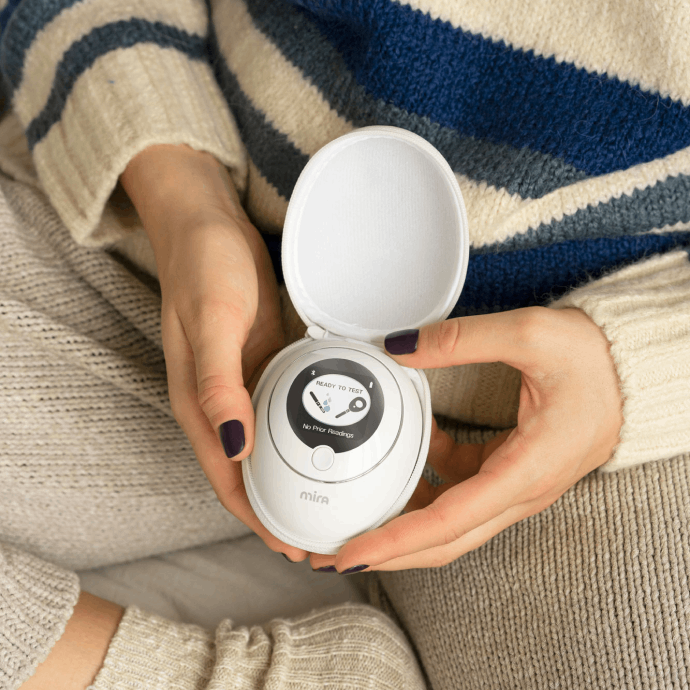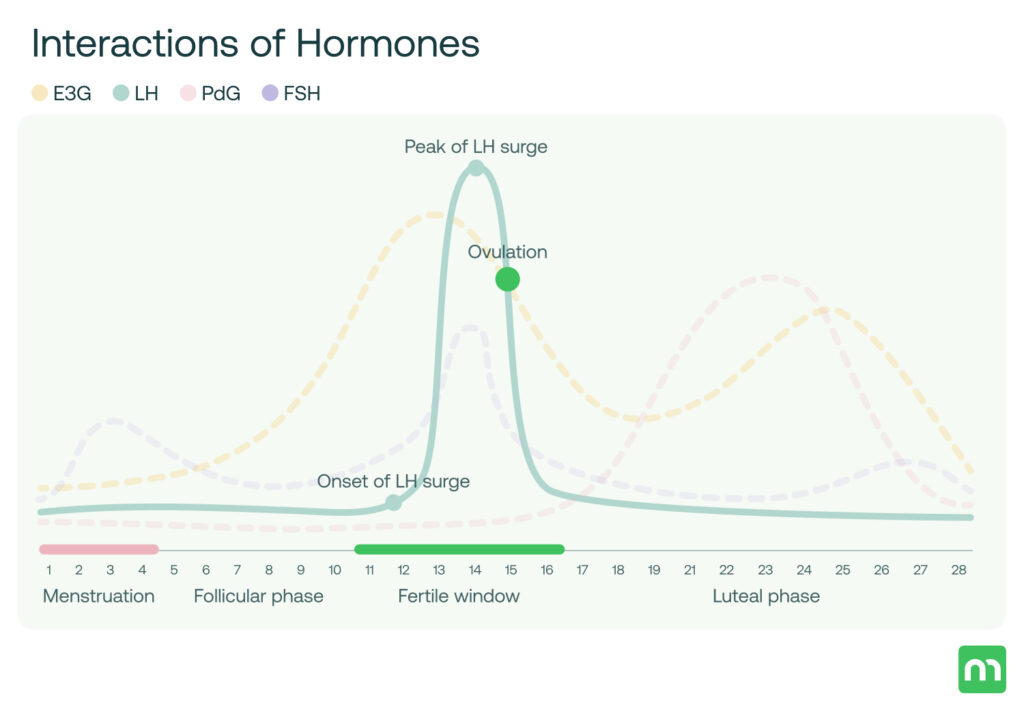LH Levels: Understanding Normal Ranges and The Benefit of Testing

Hormones shape our well-being behind the scenes. They control our moods and metabolism. For fertility, one hormone matters most—luteinizing hormone, also known as LH. If you want to have a baby, keep track of your periods, or learn about your body, knowing luteinizing hormone levels helps a lot. This small hormone plays a crucial role in our body’s biochemical process and is vital for both men and people with ovaries. When you understand LH levels, you can learn about ovulation, fertility, and reproductive health. This article will tell you what LH is and why it’s so important. You’ll learn how to check it and keep it balanced. We’ll share some useful tips and cool facts, and maybe surprise you as we explore how this hormone affects your body’s baby-making process.
Are you ready to understand what your body is telling you? Let’s get started!
What Are LH Levels?
Luteinizing hormone (LH) might seem simple, but its role is far more complex and vital. LH is a cornerstone of your reproductive health, produced by the pituitary gland—a pea-sized organ located at the base of your brain. Imagine LH as a sort of conductor, controlling the traffic of signals that command ovulation in people with ovaries or testosterone production in men. In essence, it tells your body when it’s showtime.

For people with ovaries, LH levels perform an elegant dance with the menstrual cycle, rising and falling in time like the waves on a beach. In men, while less fluctuating, LH is just as critical, playing a steady role in regulating testosterone—which is crucial for sperm production. Without LH? Fertility would stall. Ovulation wouldn’t occur. Sperm wouldn’t be produced. It’s that vital.
Why Are Luteinizing Hormone Levels Important?
For Women and AFAB
For women and people with ovaries, LH plays a crucial role in ovulation. This is when an egg makes its exit from the ovary, embarking on a journey down the fallopian tube, perhaps to meet its sperm counterpart for fertilization. If LH levels in females aren’t adequate, there’s no egg release, no ovulation, and pregnancy becomes impossible. It’s a basic yet crucial fact.
But the hormone’s importance doesn’t end there. LH also helps regulate the production of progesterone, another vital hormone, which is an endogenous steroid hormone that is commonly produced by the adrenal glands as well as the gonads and one of the most important luteinizing hormone functions to prepare the uterus for pregnancy. If LH levels go awry, this delicate balance can be disrupted, potentially leading to fertility struggles.
For Men
But what about men? LH is equally important for them, though in a different context. Luteinizing hormone in males stimulates the Leydig cells in the testes, and the function of this cell is to produce testosterone. Testosterone, in turn, is the lifeblood of sperm production and drives a healthy sex drive. Low LH levels in men? They can trigger a cascade of issues—low testosterone, reduced fertility, and even shifts in mood and energy levels.
How LH Levels Change Throughout the Menstrual Cycle
The menstrual cycle is a highly regulated physiological process, and LH has a key influence on how it’s controlled. Let’s break down this сycle.
The Role of Luteinizing Hormone in the Follicular Phase
This process starts with your menstrual cycle, encompasses the menses, and lasts until ovulation. In this period, estrogen levels grow and make the inside of the uterus or its lining (endometrium) get bigger than usual. Follicle-stimulating hormone (FSH) is yet another hormone dominated in this stage and it stimulates the development of follicles in the ovaries. From day 10 to day 14, one of the growing follicles will contain an ovum (egg cell).
Toward the end of the follicular phase, high estrogen levels trigger your pituitary gland to release a surge of luteinizing hormone (LH), the hormone associated with ovulation trigger.
LH Surge and Ovulation
As the name states, ovulation is when the ovary releases the egg for fertilization and it occurs on an average day 14 in the 28-day schedule. At this point, a surge in luteinizing hormone (LH), occurs and causes the ovary to discharge an egg from the follicle. This is called ovulation.
The LH surge typically lasts around 24 to 36 hours. If you’re trying to conceive, this is the golden window. Ovulation predictor kits (OPKs) can be your best friend, helping you catch that surge and optimize your chances of pregnancy.
LH Levels in the Luteal Phase
During this time, the body prepares for a potential pregnancy. If the egg is fertilized, LH assists the corpus luteum (a temporary structure of the ovary responsible for progesterone production). If pregnancy doesn’t occur, LH remains low, and the cycle begins in a few days.

How to Test LH Levels
Curious about your LH levels? Fortunately, there are several ways to measure this vital hormone, ranging from at-home LH tests to comprehensive blood work.
Blood Luteinizing Hormone Tests
Blood tests are the most accurate way to measure LH. If you’re grappling with irregular periods, trouble conceiving, or signs of hormonal imbalance, your healthcare provider may recommend this test. It provides an exact snapshot of your LH levels, potentially uncovering underlying conditions affecting your reproductive health.
Ovulation Predictor Kits (OPKs)
You may need OPKs if you are actively trying to conceive. It is a cheap and comfortable solution for fertility insights. You can use these convenient at-home tests to detect the LH surge in your urine, which signals that ovulation is imminent. You can closely estimate your most fertile days using OPKs since timing is everything when it comes to conception. But we must not forget that, This is an estimation based on fixed thresholds, so accuracy may vary.
Ongoing At-Home LH Monitoring
Regular well-being data feedback is a must-have for people who require it to keep track of their physical condition, for instance, using hormonal health premium tracking tools like the Mira Hormone Monitor and Mira Wands enables you to track your LH levels on specific mornings during key days of your cycle, while you are at home. The Hormone Monitor is integrated with the Mira App, which provides you with fast reports of your menstrual cycle condition wherever you are. It is like having a hormone lab in the palm of your hand!
What Can Affect LH Levels Test Result?
LH levels are not just independent entities but they are regulated by many factors. Stress, illness, drugs, alcohol, and other factors can affect and change LH levels. The level of LH is usually higher in the morning, so the LH test being held at the same time every morning can produce more predictable results.
How to Interpret Test Results?
Interpreting LH levels might appear to be difficult initially, however, it is simpler than it seems. The typical LH levels vary across the cycle in people with ovaries, or men, according to their general reproductive health. In people with ovaries, the best way to truly determine if you’re ovulating is by seeing the interaction between all of your key sex hormones—FSH, E3G (for ovulation prediction), and PdG (for ovulation confirmation) alongside your LH, you can do it with tracking tools like Mira. In men, the presence of this hormone means that the sperm-producing system is working properly. Low levels or persistently high levels can be indicators of other issues such as Polycystic Ovary Syndrome (PCOS), premature menopause, or pituitary disorders.
How to Balance LH Levels Naturally
While maintaining normal LH levels is not an easy task, proper lifestyle modifications make it possible to promote ideal hormone functioning. For instance, the aspect of a healthy diet includes whole foods, especially those containing vitamins, healthy oils, and proteins, as these are essential in managing hormonal fluctuations. Another way of naturally regulating these hormones, LH included, is through physical activity, especially moderate aerobic exercises and strength training that improve the general functioning of the endocrine system.
Herbal products like Mira Fertility Tea can be incorporated into everyday use to support reproductive health by assisting in balancing hormones. In the same manner, the use of prenatal multivitamins, even for those who are not pregnant, may help foundationally in hormone-restoring nutrients.
Starting your journey towards improving your hormonal health, you can work with a hormone health practitioner (like the ones from Mira’s Hormone Health Clinic for Fertility), which will offer specific strategies and interventions to stabilize your LH levels.
LH Levels in Men: What You Need to Know
Even though LH is typically related to the female reproductive possibility, it is as essential for men as it is for people with ovaries. LH is the one that stimulates the production of testosterone, which is necessary for the formation of the sperm and also for the overall good health of the man. The underproduction of LH in males can lead to lower fertility, lack of libido, and even depressed mood. So, gentlemen, it’s worth checking your LH levels, too!
What does it mean to have low LH levels?
Low LH levels could point to a pituitary gland issue, hypothalamic amenorrhea, or other hormonal imbalances.
What should be the ideal LH level during ovulation?
During the LH surge, levels can peak between 25-40 IU/L.
Does the time of day affect LH levels?
Yes, LH levels are typically higher in the morning, so consistency in testing time is key for accurate results.
Why are my LH levels still on the higher side?
High LH levels could be indicative of some underlying conditions, so you should visit your doctor for an examination or consult with specialists from Hormone Health Clinic for Fertility for lifestyle adjustment strategies.
What does your LH surge look like?
It’s a rapid, sharp increase in LH levels, signaling ovulation is just around the corner.
Mira’s Editorial Process
All content produced by Mira meets stringent editorial standards, ensuring excellence and accuracy in language and medical precision. Every piece undergoes thorough fact-checking and review by qualified professionals. Check out our full editorial process to learn more.










